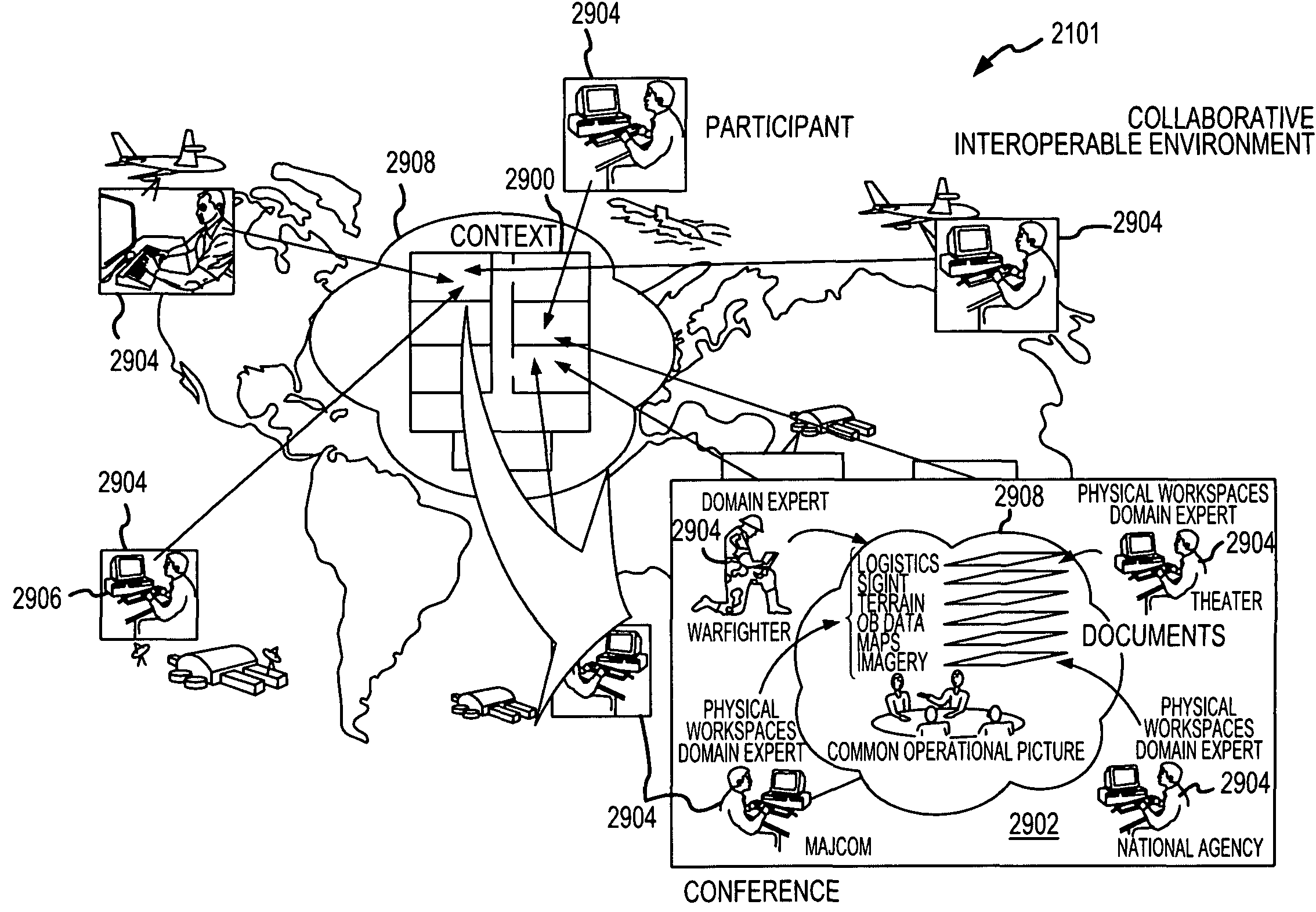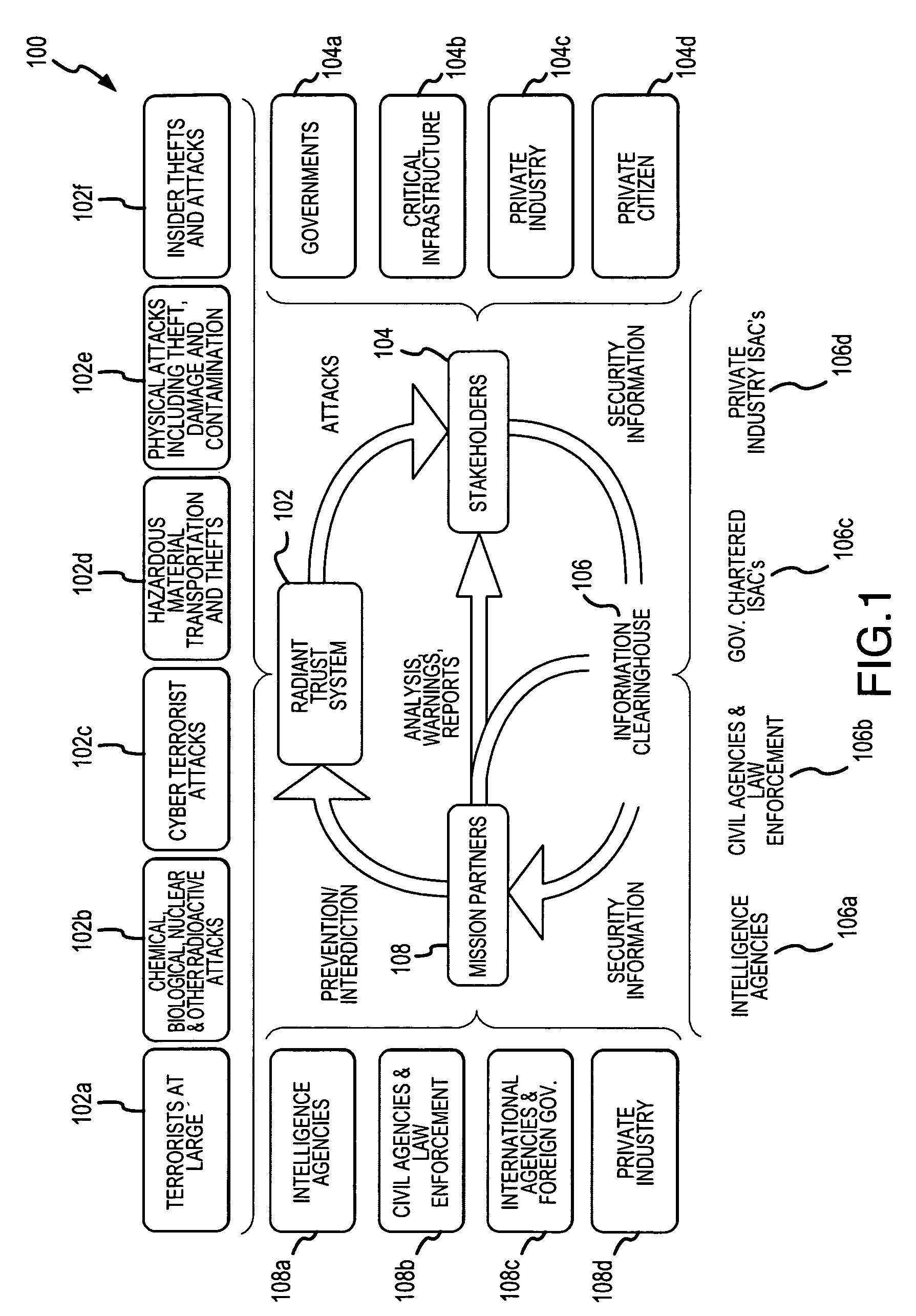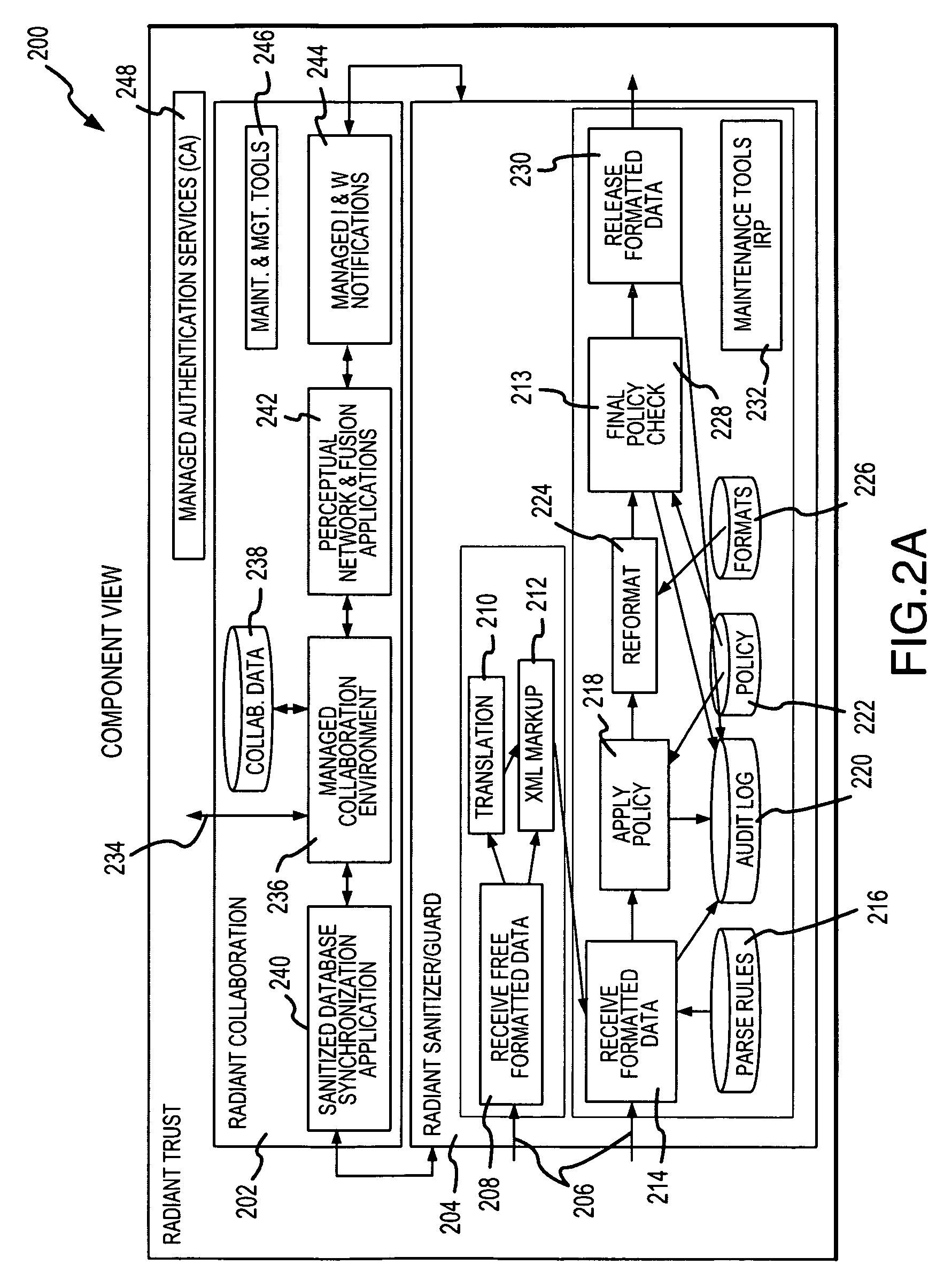[0007]Preferably, a single policy governs
dissemination of information among the multiple users. This policy may be negotiated by or otherwise agreed to among the multiple users and data owners. The policy may be implemented by a set of rules defining, for example, which users are entitled to access or use certain sensitive information or portions thereof, what activities a particular user may perform in relation to sensitive information, or the like. In this regard, multiple classifications of network users may be defined with corresponding rules regarding access to or use of sensitive information. Such classifications may vary depending on the context. For example, the
system may distinguish between government or non-government users, between industry partners and competitors, between approved
information aggregation tools / users and others, etc. In this manner, multiple users having multiple different classifications can securely collaborate while a consistent policy regarding
dissemination of sensitive information is automatically enforced in substantially realtime.
[0008]The activity identified by the computer-based tool may involve potential access to sensitive information by one or more identified parties, potential transfer of such information, potential modification or aggregation of the sensitive information, or another potential use of the sensitive information. Depending, for example, on the policy and the identity or identities of the potential user (users), such an activity may be allowed, prevented or allowed with appropriate measures to enforce the policy. For example,
policy enforcement may involve eliminating sensitive information or altering sensitive information. Thus, for example, the name of a victimized company or a patient may be omitted or changed to a generic identifier. Sensitive data may be deleted, reduced in accuracy or otherwise modified. In this manner, a high level of useful
collaboration can be supported while enforcing the policy.
[0009]In accordance with another aspect of the present invention, records can be maintained regarding the use of sensitive information to further encourage confidence within the collaborative environment. An associated utility involves establishing a collaborative environment for multiple users where the collaborative environment includes a computer-based tool for monitoring activities involving collaboration
subject matter; operating the computer-based tool to identify an activity involving the sensitive information; and operating a computer-based tool to establish a log entry for the activity identifying a user associated with the activity and the nature of the activity. Thus, the log entries may collectively indicate which users have had access to, modified or otherwise used particular items of sensitive information. Such log entries can be audited by a user, a trusted official, or other
third party to verify that sensitive information has been handled in accordance with the established policy. Additionally, the computer-based tool may provide automated
processing of the log entries for continuous auditing compliance.
[0012]In one implementation, the collaboration
system is used to filter information disseminated to multiple recipients so as to protect sensitive data. Thus, for example, the content-based rules may be used to implement a policy (e.g., established by specific users, collaboration groups or defined enclaves or established based on a relationship between a given source and recipient) regarding transmissions of sensitive information or to facilitate collaboration between users having different nationalities, security clearances, statuses (e.g., public or private sector) or authorizations relative to sensitive information. Thus, for example, the content-based rules may be associated with particular intended recipients based on the identity of that recipient or the nationality, security clearance, title, affiliation or other attribute of that recipient. The filtering may involve removing or modifying the sensitive information to comply with rules protecting the information. For example, names may be deleted or changed (e.g., genericized) to protect privacy or security concerns or sensitive data may be deleted or the accuracy of data may be changed to accommodate access limitations of particular intended recipients. By using multiple rules associated with multiple users, collaboration is facilitated even in environments where individual user access to the collaboration
subject matter may be limited.
[0013]In accordance with another aspect of the present invention, a utility is provided for making information from multiple sources available to a user
system in a collaborative environment in accordance with content-based rules. For example, the utility may be used to facilitate multi-source aggregation type collaboration while maintaining the integrity of sensitive data. The utility involves operating a collaboration system to receive first and second collaboration
subject matter inputs from first and
second source systems, respectively, and identify a user system for receiving an output. The collaboration system is further operative for
processing each of the inputs based on a content-based rule set associated with the identified user system and providing the user system access to a first output established using the first input and the content-based rule set and a second output established using the second input and the content-based rule set.
 Login to View More
Login to View More  Login to View More
Login to View More 


